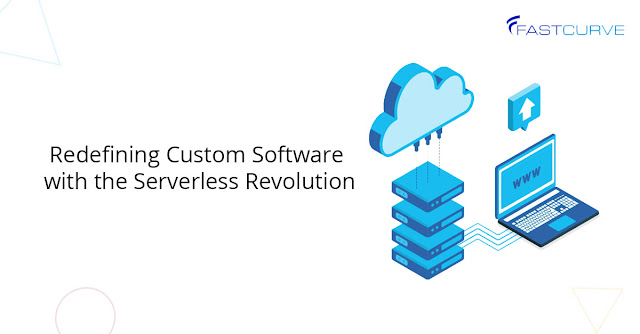Serverless Computing and The Future of Custom Software
In cloud computing, serverless computing creates efficiencies for modern businesses through flexibility and improved application performance. This breakthrough technology allows businesses to exemplify innovation by leveraging the future of custom software development. Such an infrastructure shift to the cloud will embrace agility, where software developers can primarily focus on developing code and application design optimization. This article will discover how serverless architecture is vital to software development operations.
What is Serverless Cloud Computing?
Replacing the need for containerized architecture, serverless computing is enhancing flexibility as the needed functions are hosted rather than the entire infrastructure. You do not have to depend on the server infrastructure for deploying and managing applications. Organizations can utilize AWS serverless architecture to assist with on-demand code requirements, which reduces costs and eliminates the need for server maintenance.
This model enables business organizations to run their applications without server dependence. The server is managed by an IT business consultant who handles the scaling availability. The resources will be handed to you as a service, in which you only pay for what you use. This reduces the extra cost involved. Your developers will focus on developing new functionalities and features and not worry about how the infrastructure will work and scale as per demand.
How Does Serverless Computing Impact Custom Software Development?
Unlike traditional web servers, serverless computing can be used to host web applications innovatively and agilely. Its popularity can be observed in custom software development, wherein the best innovative infrastructure is for developing high-performing apps.
Now, let's see how the future of custom software development can be impacted when organizations opt for serverless computing.
Leveraging Function-as-a-Service (FaaS)
The real job of developers is to develop code and not to manage servers. Serverless computing is a computing pattern that allows developers to develop and deploy application logic quickly. The top serverless providers can handle the execution of the functionality on request. This can be possible with AWS Lambda or Azure Functions.
Quick Deployment
Being the largest trend in cloud development, serverless computing is marking its presence in inefficient business operations with agility and rapid prototyping. AWS cloud service providers take the responsibility of handling all instances of your software and boost the chances of scalable software development. Brands like Uber and Netflix have already used these cloud-native methods for rapid deployment.
Cost Reduced
The purpose of efficient software development is to minimize cost while running applications flexibly and scalable. By invading the cloud ecosystem, businesses can reduce the cost of operations by only paying for the resources in use. Deciding to shift to a serverless architecture can lower costs and simultaneously create potential avenues.
Software Development Frameworks
While you are leveraging various software development frameworks for fast deployment, custom software development can be more agile when you get your hands on serverless architecture. By aligning with the microservice philosophy, one can manage the functions independently without depending upon the underlying servers. Your full-stack developers will find it a lucrative option as they can focus on the front architecture as this emerging technology is already handling the backend server.
Improved Resource Utilization
Getting your infrastructure headaches covered with AWS cloud migration services can make your operations superior with optimum resource utilization. The resource can be used only for any specific event, enabling event-driven architectures. Being scalable, your resources can be removed from the server on demand. Users will get the response on time even in high-traffic times because the technology adjusts.
What’s Wrong with Serverless Computing?
Regardless of how efficiently serverless software works, there are challenges in moving to the cloud. When you rely on a third-party server, your security is already being hampered due to limited control over the data. Rather than a short-term decision, consider it a long-run one because vendor lock-in can create difficulties when compatibility issues occur. While choosing the serverless platform, it is not always cheaper. There are instances where organizations have unpredictable workloads that will require over-provisioning of resources, and they might end up paying for unused resources.
Final Thoughts!
Serverless computing is transforming the future of custom software, being an exciting technology bringing revolution. Businesses can bring efficiencies in the development phase by facilitating on-demand resource access. Despite its significant drawbacks, serverless architectures will become common in the coming years. It is a promising tech perspective which can boost productivity and speed up the development cycle.
Still not sure about the cloud adoption? Contact Fastcurve Services and discover your cloud edge as a step for custom software development in the future.
Read our related blog, which discusses best practices for designing and developing custom web apps.



Comments
Post a Comment